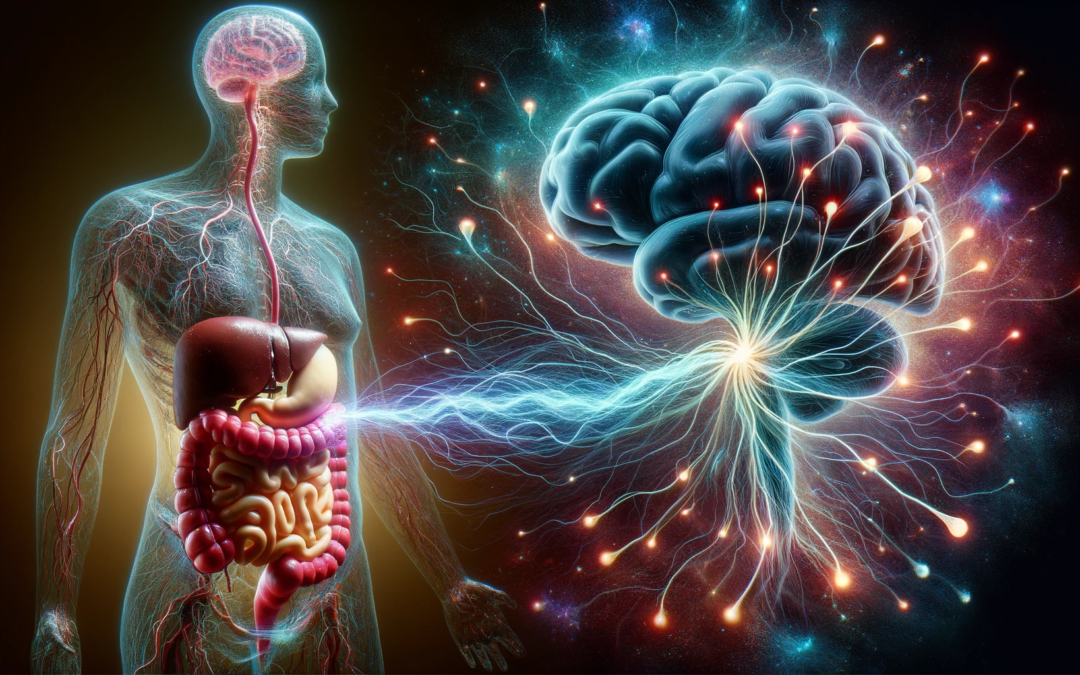In the complex and ever-unfolding tapestry of the human anatomy, there exists a lesser-known yet profoundly impactful domain: the enteric nervous system (ENS), often referred to as our “second brain”. This remarkable network, comprising over 100 million nerve cells, is ensconced within the meandering pathways of our gastrointestinal tract. It operates with a level of autonomy that is both mysterious and intriguing, embodying the literal and metaphorical essence of the phrase “gut feeling”, and intertwining the realms of physical health, emotional well-being, and perhaps the very essence of intuition itself.
Embarking on the journey to understand the ENS is akin to exploring a hidden universe within our own bodies. This exploration transcends the simple mechanics of digestion. Our second brain orchestrates a complex symphony of processes, communicating with our primary brain in ways that are only just beginning to be unraveled. Its influence is vast, extending across the entire spectrum of human experience – from the fluttering sensations of anticipation to the deep, instinctual urges of hunger; from the visceral emotions of anxiety to the soothing calm that settles after a nourishing meal.
The narrative of the ENS unfolds as a tale of scientific curiosity and relentless discovery. For decades, researchers have been diligently piecing together the intricate puzzle of how this neural network functions. This realm is where neurotransmitters, hormones, and electrical impulses engage in a complex dance, regulating our digestive processes, modulating our mood, and potentially playing a pivotal role in the onset of major diseases.
Yet, the ENS transcends the bounds of mere biological phenomena; it serves as a portal into the depths of the human experience, acting as a bridge between the mind and body. The adages “trust your gut” and “listen to your gut” are not merely relics of folk wisdom; they are acknowledgments of the profound intelligence that resides within our gut. Our “gut feelings”, those elusive yet powerful intuitions, may very well be the whispers of the ENS at work, a silent yet potent communicator within our body’s own internal network.
As we delve into the intricacies of the ENS, we find ourselves at the confluence of neuroscience, psychology, and philosophy. This exploration reveals how our two brains – the one nestled within our skull and its counterpart in our gut – engage in a dialog, a language comprised of biochemistry and emotion. This conversation shapes our decisions, our health, and our lives in ways we are only beginning to comprehend.
The quest to understand the ENS is an ongoing adventure, each discovery peeling back layers to reveal further questions, beckoning us into previously uncharted territories of human health and consciousness. With every step deeper into this investigation, we are reminded of the second brain’s role not just as a subject of scientific inquiry, but as a beacon of biological innovation and complexity. It is a testament to the wondrous intricacies of the human body, highlighting the vast unexplored frontiers that lie within us, waiting to be discovered.
This contemplative exploration of the ENS blends the realms of wonder and grounded science, weaving together a narrative that marries the poetic with the pragmatic. It’s a story that not only illuminates the profound connections between our bodily functions and mental processes but also invites us to reconsider our understanding of what it means to be in tune with our bodies.
Moreover, the exploration of the ENS opens up new pathways for medical science and therapeutic interventions. Understanding how this second brain influences our overall well-being and psychological state can lead to innovative treatments for a myriad of conditions, from digestive disorders to mental health challenges. It prompts a reevaluation of how we approach medicine, emphasizing a more holistic view that accounts for the intricate interplay between our physical and mental health.
In this narrative, the ENS emerges not just as a scientific curiosity but as a guiding light in the murky waters of medical and psychological understanding, illuminating the path toward a more integrated approach to health and wellness. It underscores the importance of listening to our bodies, of paying heed to the subtle signals and intuitions that guide us through the complexities of life.
As we continue to unravel the mysteries of the ENS, we are reminded of the enduring marvel that is the human body. It is a journey that not only broadens our understanding of ourselves but also deepens our appreciation for the nuanced and intricate ways in which the fabric of life is woven. The ENS, our second brain, stands as a lighthouse of biological ingenuity, its light shining bright on the uncharted territories of our inner landscapes, revealing the profound interconnectedness of our bodies and minds.
This exploration of the ENS is more than a scientific endeavor; it is a journey into the heart of what it means to be human, uncovering the deep-seated connections that define our health, influence our emotions, and shape our very essence. It is a reminder that within us lies not just the capacity for understanding but also the potential for wonder and discovery.










